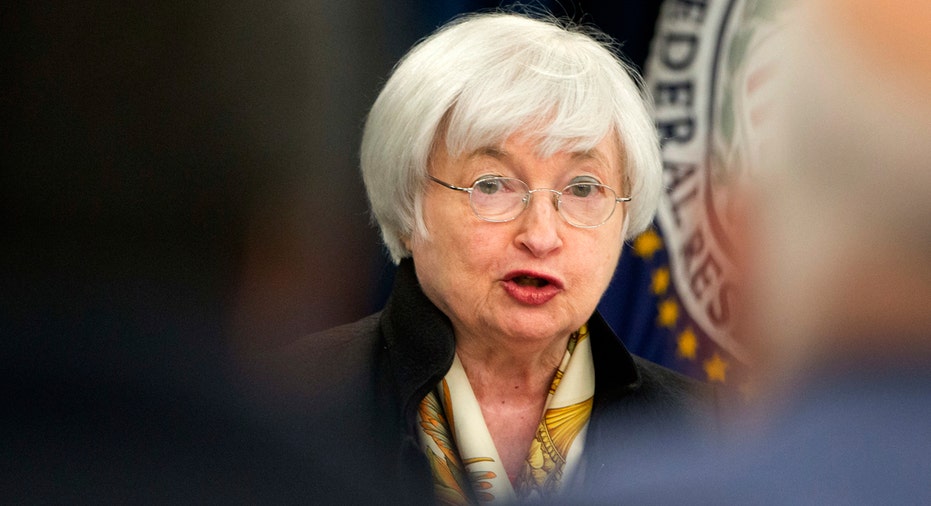Fed Punts on Rates: Cites Brexit, Labor Market as Main Concerns

The Federal Reserve on Wednesday kept short-term interest rates near historic lows, opting for no change in monetary policy at the conclusion of its two-day June meeting. The decision was right in line with Wall Street expectations, which had priced in just a 2% chance of a rate rise this month.
In a statement, the Fed explained its reasoning for the decision, citing soft business investment, inflation running below the 2% target, and a slowdown in the labor market.
The May jobs report, released two weeks ago, showed a significant drop in the rate of job creation from previous months. The U.S. economy added just 38,000 net new jobs during the month, while Wall Street expected 164,000. Figures from the prior two months were revised lower, while both the labor force participation and unemployment rates declined. The lower participation rate signaled more Americans left the workforce in May.
Despite the factors weighing on its decision, the FOMC cited positive gains in the overall economy including growth in household spending, and a lesser drag from net exports.
“The committee will carefully monitor actual and expected progress toward its inflation goal. The committee expects that economic conditions will evolve in a manner that will warrant only gradual increases in the federal funds rate,†the statement read.
Members of the FOMC maintained their collective outlook for two rate hikes by the end of 2016, but lowered forecasts for rate rises over the next two years.
"Brexit is something we discussed and itâs fair to say it was one of the factors [in] the decision today."
Randy Frederick, managing director of trading and derivatives at Charles Schwab (NYSE:SCHW), said the June decision showed the Fed was finally moving its expectations in line with Wall Street’s.
“There is so much data and so many things that can happen, it’s hard to forecast a couple months ahead let alone a couple of years,†he said. “Look at December: Their forecast was for four rate hikes, the markets said ‘no, just two.’ Now the market is [lowering its expectation and] the Fed is moving down as well. The collective wisdom of the market is right,†he said.
Following the decision, market expectations for future rate rises declined. Fed funds futures, a tool used to predict market expectations about changes in monetary policy, showed a 21% chance of a rate hike next month ahead of the 2:00 decision before moving down to just 10%. September, which stood at 35%, now stands at 26%, and the 54% likelihood in December moved lower to just 48%.
External Risk Factors through the Fed’s Lens
Notably absent from the Fed’s June statement was any discussion about external risk factors including the looming so-called Brexit referendum next Thursday when voters head to the polls to decide whether the U.K. should end its membership in the European Union.
However, during her press conference following the decision, Fed Chief Janet Yellen said the central bank “will continue to monitor global economic developments,†and that the looming vote was a factor in the central bank’s decision this month.
“Brexit is something we discussed and it’s fair to say it was one of the factors that factored into the decision today,†she said. “It is a decision that could have consequences for economic and financial conditions in the global financial markets…for the U.S. economic outlook.â€
Frederick said while he doesn’t see a leave vote resulting from the referendum, as Yellen expressed, it will be critical to both financial and economic conditions in the U.S. should it happen.
“Brexit is a critical issue...[this meeting had] too close a proximity to the vote. The increase in volatility the last few sessions has been tied to Brexit more than the Fed meeting,†he explained.
However, Mark Fleming, chief economist at First American (NYSE:FAF), said should the outcome of the Brexit vote result in the U.K. leaving the EU, the Fed could receive an unexpected tailwind that would provide a boost to the housing market.
“Brexit is more likely to influence mortgage rates than domestic Fed actions,†he said. “Global risk drives the long end of the yield curve. Brexit would cause a flight to safety toward American bonds, driving down yields and driving down mortgage rates.â€



















